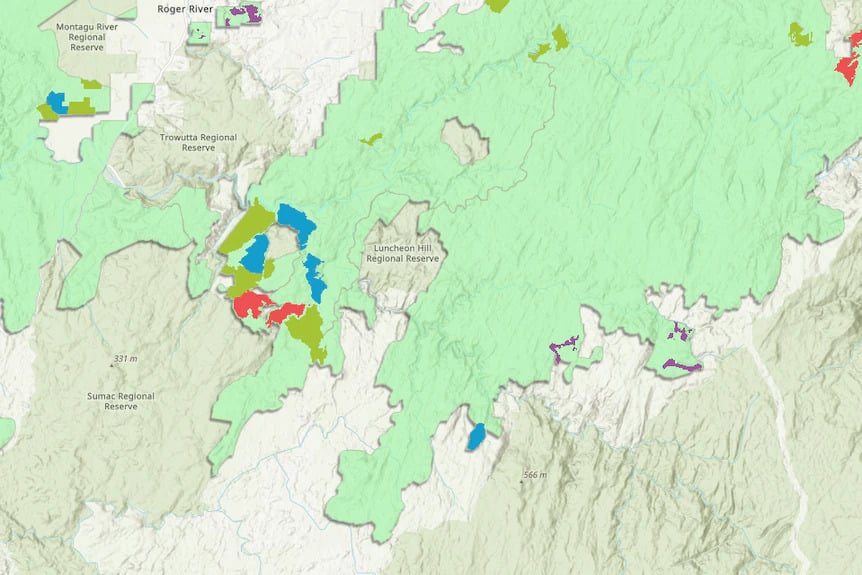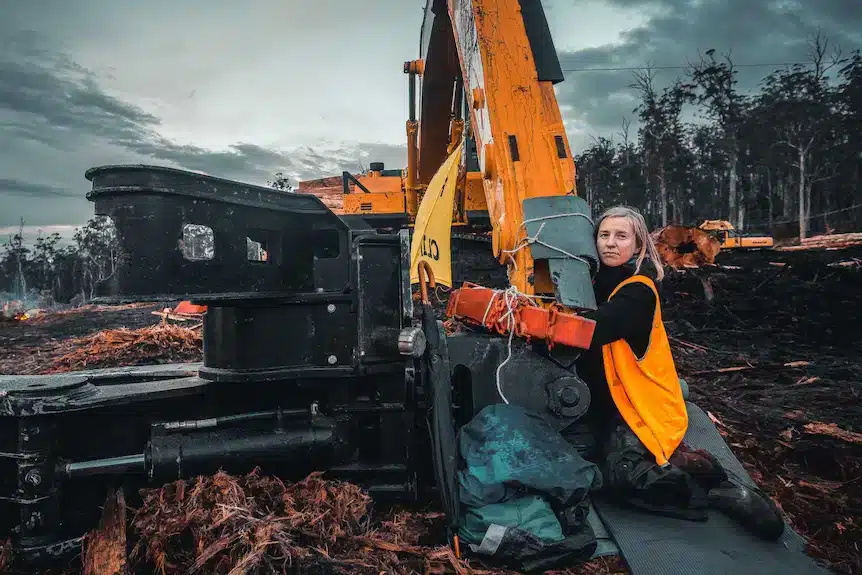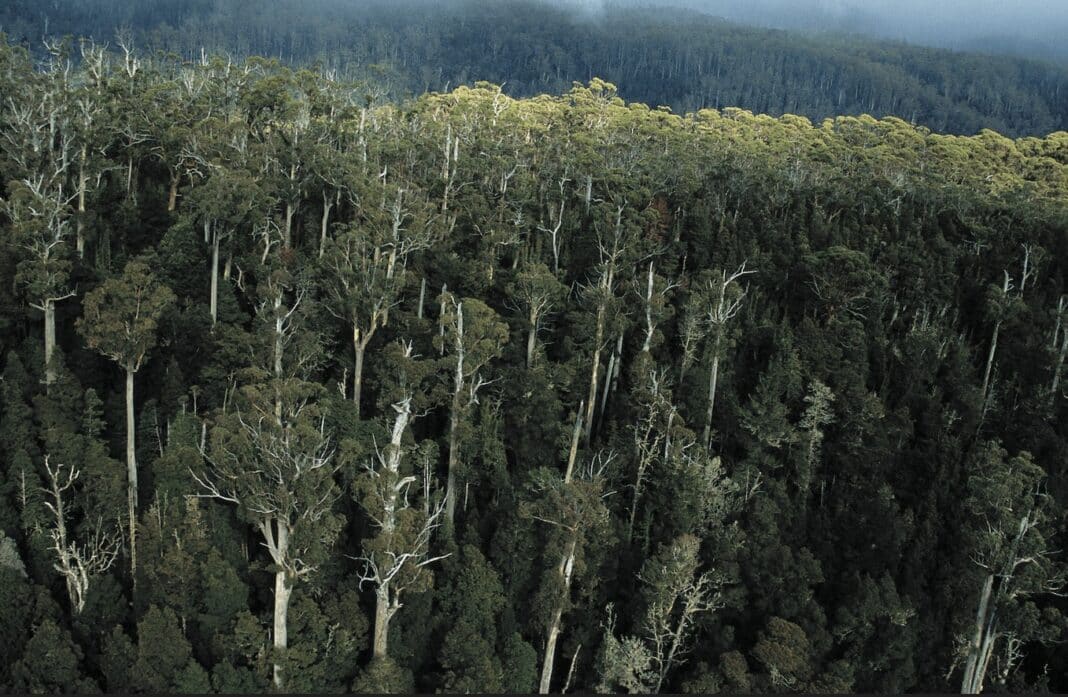Tasmania has expanded its area available for native harvesting.
Sustainable Timber Tasmania (STT) updated its three-year schedule on July 1, which shows native forestry coupes available for logging at short notice.
- More information about the three-year wood production plan is available here.
Under the revised plan, 1,000 hectares have been added to the wood production plan.
The ABC reports that the new plan removes serval contentious areas – including a forest known as “Grove of Giants” containing the world’s tallest known blue gum, along with an estimated 150 trees with diameters over four metres.
One of those groups, The Tree Projects, had run regular tree climbs to raise awareness of the forest, with one attended by United States Ambassador to Australia, Caroline Kennedy.
STT General Manager of Operations Greg Hickey told the ABC that not all coupes included in the plan would be harvested, and some could be added or removed in the future for various reasons.
“This may occur due to stakeholder feedback or … specific environmental, social, economic, or temporal reasons,” he said.
The plan responded to the availability of log supply, he said, to make sure STT met its contractual commitments, and adding hectare totals together was not necessarily an indication of how much logging would occur.

“Adding all the areas listed in the three year plan will not indicate how many hectares of forest could be harvested by Sustainable Timber Tasmania,” he said.
The Grove of Giants was removed following a “review of the coupe”.
Is a Forest War on the cards?
Tasmania could be heading for another forest war as sawmillers grapple with a sharp decline in native timber log supply, pushing for access to forests safeguarded by the state’s forest peace deal.
At the same time, Tasmanian environmentalists, buoyed by the decision to close Victoria’s native forest industry, are pushing to close Tasmanian native coups.
“The dominos are falling,” the Bob Brown Foundation said in a statement on Wednesday. “First WA, and now Victoria – Tasmania, Queensland and NSW must be next.
“People will stand up to protect those forests,” Bob Brown Foundation campaign manager Jenny Weber said.
Sawmillers seek access to new coupes
As reported by Matthew Denholm in an exclusive for The Weekend Australian, the Tasmanian Sawmillers Association is pushing to open discussions with the government to increase its harvesting areas under the 2012 Tasmanian Forests Agreement.
This comes in the wake of estimates from Sustainable Timbers Tasmania obtained by The Weekend Australian, which reveal a drop in the annual supply of native forest sawlogs from production forests, from 137,000 cubic metres to 58,000 cubic metres, from 2027-28 onwards.
Sustainable Timber Tasmania is required under the Forest Management Act 2013 to make available a minimum annual quantity of 137,000 cubic metres of high-quality eucalyptus sawlog. They also have a contractual obligation to supply a further 50,000 cubic meters of lower-quality saw logs and to provide special species timbers to sawmillers.
Spokesman Matthew Torenius said the “magnitude” of the drop-off and Victorian mills purchasing an alternative private native forest resource meant accessing some peace deal forests had to be discussed.
“Our members have to be open to all options in that regard, faced with a large drop-off in supply,” Mr Torenius said.
“In terms of what happens after 2027, the industry really has to start engaging with the government now because of the lead time for investment decisions that need to be made in the next 18 months to two years.
“Without a certainty of supply from 2027, that puts a big question mark over those capital investments.”

Despite the 2014 state Liberal government officially “tearing up” the peace deal – an agreement between the timber industry, conservation groups, and trade unions – the 356,000 hectares of protected forests were essentially preserved and rebranded as “Future Potential Production Forests.”
Torenius mentioned that this process may need to be activated, potentially involving “swapping out” some of the peace deal forests required for sawlogs with another forested land worthy of protection, adding, “That would be the first option to look at.”
Minister: Victorian decision opens opportunity for Tasmanian industry
Resources Minister Felix Ellis said he was open to backing such a push.
“Where industry can demonstrate the need, then we’ll be definitely considering that,” he said.
In the meantime, he said Victoria’s decision had opened opportunities for the Tasmanian industry, including increased demand.
“Our forestry sector wasn’t set up for different states to make such terrible decisions as this.”
Tasmanian Resources Minister, Felix Ellis
“And we’ll need to work to ensure that we maximise local processing, local capability, and local jobs.”
The Tasmanian Forest Products Association (TFPA) would not say whether it also wanted some of the FPPF land to be made available for harvest.
“The TFPA has faith in the government to ensure that the estate, and our future resource security, will be correctly managed,” chief executive Nick Steel said.
ENGO’s: Push on forest access is a ‘red line’
Environmentalists have issued stern warnings, claiming that logging any 356,000 hectares protected under the 2012 deal would be a “red line.”

Wilderness Society Tasmania campaigns manager Tom Allen stated, “If Tasmania’s government starts logging forests outside the existing 800,000-hectare production zone, it will darken this cloud, as well as chill the markets and destabilise the industry.”
Mr Allen is particularly incensed that after receiving a significant compensation package as part of the peace deal, the industry is pushing for access to new areas.
Any move to allow harvesting in the native forests in question would require the approval of both houses of parliament.
Torenius: Plantation nitens stock is inferior for high-quality furniture and journey
Torenius also commented on the quality of the plantation nitens stock, intended to compensate for the anticipated decline in native forest logs from 2027, stating that it was inferior for high-quality furniture and joinery.
Sustainable Timber Tasmania CEO Steve Whiteley said that these substitute plantation logs were equivalent to a category three sawlog is suitable if mills transitioned their equipment.






